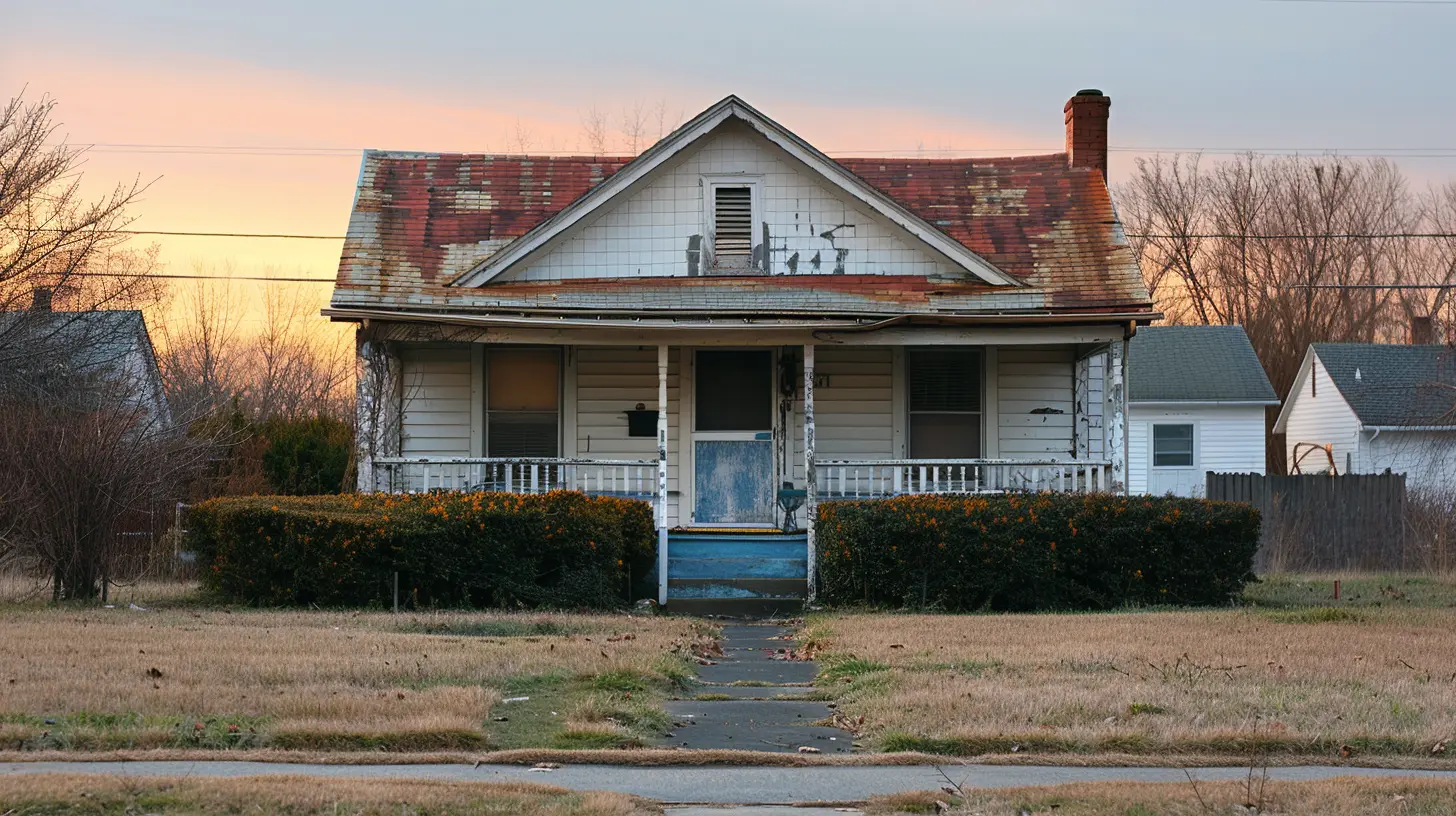The Timeline of a Foreclosure: What Buyers Need to Know
17 August 2025
Buying a foreclosed home can be a golden opportunity—or a financial nightmare. If you’re considering investing in a foreclosure, understanding the process is absolutely crucial. The timeline of a foreclosure is filled with legal requirements, financial hurdles, and unpredictable delays.
So, how long does it actually take for a foreclosure to go from the first missed payment to being auctioned off or sold? More importantly, what should buyers be aware of before diving into this potentially lucrative market?
Let’s break it all down step by step. 
What is Foreclosure & Why Does It Happen?
Foreclosure happens when a homeowner can no longer afford to make their mortgage payments. When this happens, the lender (typically a bank) steps in to take possession of the home. After regaining control, they sell the property to recover their losses.This process doesn’t happen overnight. It follows a strict legal timeline, which varies by state. Some states allow lenders to foreclose on a property in as little as six months, while others can drag the process out for years.
The most common reasons for foreclosure are:
- Job loss or financial hardship – Unexpected expenses or losing a job can quickly put homeowners in a tough spot.
- Medical emergencies – High medical bills can drain finances, leaving little room for mortgage payments.
- Divorce or separation – A split can mean a loss of income, making mortgage payments unaffordable.
- Adjustable-rate mortgages (ARMs) resetting – Some homeowners find their mortgage payments skyrocket when adjustable rates increase.
- Unexpected major expenses – A failing roof or a major plumbing disaster can push some homeowners past their financial breaking point.
Whatever the reason, once a homeowner starts missing payments, the foreclosure process officially begins. 
Phase 1: Missed Mortgage Payment (Day 1-30)
The foreclosure timeline kicks off the moment a homeowner misses their first mortgage payment. However, lenders don’t immediately take action.Most banks offer a grace period of around 15 days. If the payment isn’t made within that timeframe, the lender may charge a late fee.
At this stage, homeowners still have time to catch up. Most lenders aren't eager to start foreclosure proceedings—they actually lose money on foreclosures. Instead, they usually:
- Send reminders via mail or email
- Offer repayment plans or loan modifications
- Call the homeowner to discuss the missed payment
However, if the payments continue to be missed, things start escalating quickly. 
Phase 2: Notice of Default (30-90 Days Past Due)
By the time a homeowner is 90 days late on their mortgage, the lender issues a Notice of Default (NOD). This is the formal start of the foreclosure process.What does this mean for the homeowner?
- The lender reports the missed payments to credit agencies, causing a significant hit to their credit score.
- A legal notice is sent, giving the homeowner a specific deadline to catch up on payments (usually around 90 days).
- The property is now officially in pre-foreclosure status.
For buyers, this is when opportunities start appearing. Homeowners facing foreclosure may be open to short sales, where they sell the home for less than what’s owed to avoid foreclosure. 
Phase 3: Pre-Foreclosure & Notice of Sale (90-120 Days Past Due)
If the homeowner still hasn’t caught up on payments after the grace period in the NOD, the lender moves forward with a Notice of Sale (NOS). This means the home is now officially scheduled for foreclosure auction.At this stage:
- Notices are typically posted on the home itself, in newspapers, or online.
- The county recorder’s office gets an official foreclosure filing.
- The lender sets a date for the auction, usually within 2-3 months.
For buyers, this is another key opportunity to purchase the home before it goes to auction. Homeowners may be more willing to negotiate a sale rather than lose their home entirely.
Phase 4: Foreclosure Auction (120+ Days Past Due)
If the homeowner hasn’t resolved the issue by this point, the lender puts the home up for auction.Here’s how the auction works:
- It’s typically held at a courthouse, online, or through a sheriff’s sale.
- Buyers need cash or a cashier’s check to bid—financing isn’t usually an option.
- The home is usually sold “as-is,” meaning any necessary repairs become the buyer's responsibility.
For buyers looking to snag a deal, this is a high-risk, high-reward opportunity. You might get a home well below market value, but you may also inherit hidden problems—like unpaid taxes, property damage, or even occupants refusing to leave.
Phase 5: Real Estate Owned (REO) Property
If the home doesn’t sell at auction, it becomes Real Estate Owned (REO) by the lender.This typically happens when:
- The minimum auction bid isn’t met.
- There’s little to no demand for the property.
When this happens, the bank takes full ownership of the home and lists it for sale, often through real estate agents or online foreclosure listings.
Why should buyers consider REO homes?
- Easier financing options – Unlike auction homes, REOs can often be purchased with a mortgage.
- More time for inspections – Buyers can actually get the property inspected before closing.
- Negotiation opportunities – Banks want to unload these properties, which means buyers may be able to negotiate a discount.
How Long Does the Entire Foreclosure Process Take?
The full timeline can vary significantly based on state laws and lender practices. Here’s a rough estimate of how long each phase typically lasts:| Foreclosure Stage | Estimated Timeframe |
|----------------------------------|------------------------|
| Missed Payment | 1-30 days |
| Notice of Default (Pre-Foreclosure) | 30-90 days |
| Notice of Sale | 90-120 days |
| Foreclosure Auction | 120+ days |
| REO (If Unsold at Auction) | Varies (Months/Years) |
In states with judicial foreclosure (where the process must go through the court system), it can take 12-36 months to finalize. In non-judicial foreclosure states, the process can be completed in as little as 6 months.
Final Thoughts: Should You Buy a Foreclosure?
Buying a foreclosure can be an amazing investment opportunity—but only if you go in with your eyes wide open.✅ Pros:
- Below-market prices
- Potential for instant equity
- Motivated sellers (in pre-foreclosure)
❌ Cons:
- Limited (or no) inspections
- Properties often need major repairs
- Unpredictable timeline
If you’re planning to buy a foreclosure, do your homework. Understanding the timeline ensures you’re not caught off guard by delays or hidden costs. And if you’re buying at auction, make sure you’ve done your due diligence—because there’s no turning back once you’ve placed that winning bid.
Foreclosures can be a risky bet, but for those willing to navigate the process, the rewards can be well worth it.
all images in this post were generated using AI tools
Category:
ForeclosuresAuthor:

Travis Lozano
Discussion
rate this article
1 comments
Zara McCall
Understanding the foreclosure timeline is crucial for buyers; it reveals opportunities and potential pitfalls, enabling informed decisions during the bidding and purchasing processes.
August 25, 2025 at 11:03 AM

Travis Lozano
Absolutely! Understanding the foreclosure timeline can empower buyers to navigate the process effectively, helping them seize opportunities while avoiding common pitfalls.


